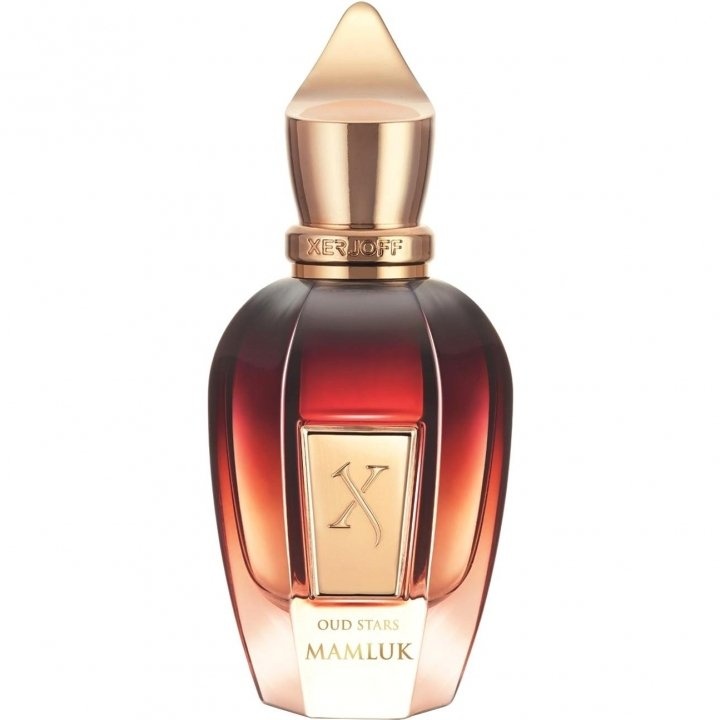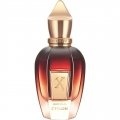5
Translated
Show original
Better Laotian than chaotic? Mamluk or Ceylon?
Admittedly, the headline may seem a little bold. But the fact is, both are "honey" oud stars and are actually the most similar of all within the line. So it's not surprising why these two fragrances are so often compared.
So which one should you go for?
This question could be answered relatively quickly if you only pay full attention to the respective price tag for a brief moment. However, if you don't let this fact put you off too much and still dare to make a comparison, you will find that both have earned their right to exist and that it really does depend on individual taste, as it always does, which one you prefer, as both take slightly different paths.
About the fragrance:
Compared to the entire Oud-Stars range, Mamluk has a very rounded and harmonious composition and is one of the sweeter fragrances in this series. It starts fresh and floral. The sweetness contained in the flowers combines directly with that of the honey. The honey here is not sweet and pungent, artificial, as is often the case with honey fragrances, but really creamy and smooth. Caramel-like notes possibly support this creamy appearance, but do not make Mamluk seem overly sweet or intrusive. The gradually recognizable fruity fragrance component in the heart can probably be attributed to osmanthus, brings with it a certain complexity and is also wonderfully balanced. In addition, the fragrance creates a beautiful warmth and depth on the skin, has slightly woody notes and a slightly earthy, dark touch. This is where the oud comes into play. If Laos oud was really used, no sour notes can be detected here, which makes the interplay even more harmonious. Only fruity and minimally smoky notes are favored in the fragrance.
In comparison, the honey note in Ceylon is somewhat more striking, as it starts off with slightly sour-animalic notes right from the opening. This makes it more striking, of course, but also significantly less pleasing. For some, it may also be a little overwhelming or even chaotically arranged. So if sensitive noses are already struggling with Mamluk, Ceylon could well give them the final coup de grace. However, I don't want to go into the "cheese anecdotes" or cowsheds that are wildly circulating in the forum, because I don't really smell them in either fragrance. Mamluk has a relatively mild and tolerable oud characteristic here, whereas Ceylon's Malay oud, paired with the musk, which in this case is really animalic, pushes these specific notes a little further to the fore. Mamluk also lacks the amber/musk intensity, but that doesn't make it unpleasantly pungent at any time and I really like it.
After 6 hours at the latest, however, you notice how the two fragrances get closer and closer to each other. Especially when it comes to the vanilla sweetness. Mamluk remains more floral throughout. Ceylon is somewhat darker, denser, warmer and, above all, spicier. Mamluk manages without any spices at all. Both fragrances easily last a day on the skin. Several days on the test strip. Mamluk remains a little quieter at the end. Personally, however, neither of them are sillage monsters for me, I'll just say that much at this point. Sensitive noses in particular will still have fun and get their money's worth. :-)
Overall, I would consider Mamluk to be the floral, perhaps even more feminine and definitely more finely balanced version of Ceylon. If you want to live out the somewhat louder, edgier and wilder version of these oriental creations, you will have to dig a little deeper into your wallet for better or worse.
For me, who tends to avoid honey fragrances, both are beautifully composed, harmonious and therefore wearable without being annoying. Nevertheless, definitely not blind buys. A test is therefore highly recommended.
So which one should you go for?
This question could be answered relatively quickly if you only pay full attention to the respective price tag for a brief moment. However, if you don't let this fact put you off too much and still dare to make a comparison, you will find that both have earned their right to exist and that it really does depend on individual taste, as it always does, which one you prefer, as both take slightly different paths.
About the fragrance:
Compared to the entire Oud-Stars range, Mamluk has a very rounded and harmonious composition and is one of the sweeter fragrances in this series. It starts fresh and floral. The sweetness contained in the flowers combines directly with that of the honey. The honey here is not sweet and pungent, artificial, as is often the case with honey fragrances, but really creamy and smooth. Caramel-like notes possibly support this creamy appearance, but do not make Mamluk seem overly sweet or intrusive. The gradually recognizable fruity fragrance component in the heart can probably be attributed to osmanthus, brings with it a certain complexity and is also wonderfully balanced. In addition, the fragrance creates a beautiful warmth and depth on the skin, has slightly woody notes and a slightly earthy, dark touch. This is where the oud comes into play. If Laos oud was really used, no sour notes can be detected here, which makes the interplay even more harmonious. Only fruity and minimally smoky notes are favored in the fragrance.
In comparison, the honey note in Ceylon is somewhat more striking, as it starts off with slightly sour-animalic notes right from the opening. This makes it more striking, of course, but also significantly less pleasing. For some, it may also be a little overwhelming or even chaotically arranged. So if sensitive noses are already struggling with Mamluk, Ceylon could well give them the final coup de grace. However, I don't want to go into the "cheese anecdotes" or cowsheds that are wildly circulating in the forum, because I don't really smell them in either fragrance. Mamluk has a relatively mild and tolerable oud characteristic here, whereas Ceylon's Malay oud, paired with the musk, which in this case is really animalic, pushes these specific notes a little further to the fore. Mamluk also lacks the amber/musk intensity, but that doesn't make it unpleasantly pungent at any time and I really like it.
After 6 hours at the latest, however, you notice how the two fragrances get closer and closer to each other. Especially when it comes to the vanilla sweetness. Mamluk remains more floral throughout. Ceylon is somewhat darker, denser, warmer and, above all, spicier. Mamluk manages without any spices at all. Both fragrances easily last a day on the skin. Several days on the test strip. Mamluk remains a little quieter at the end. Personally, however, neither of them are sillage monsters for me, I'll just say that much at this point. Sensitive noses in particular will still have fun and get their money's worth. :-)
Overall, I would consider Mamluk to be the floral, perhaps even more feminine and definitely more finely balanced version of Ceylon. If you want to live out the somewhat louder, edgier and wilder version of these oriental creations, you will have to dig a little deeper into your wallet for better or worse.
For me, who tends to avoid honey fragrances, both are beautifully composed, harmonious and therefore wearable without being annoying. Nevertheless, definitely not blind buys. A test is therefore highly recommended.
5 Comments



 NeonNoir
NeonNoir